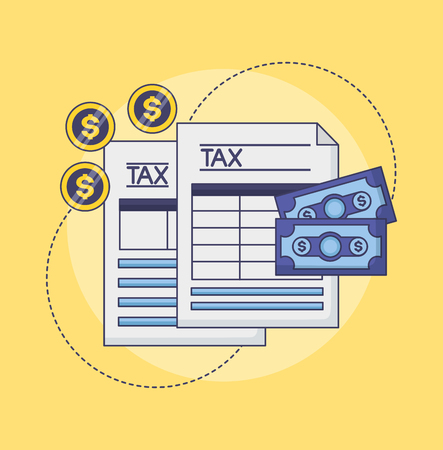1. Understanding Tax-Efficient Investing
Tax-efficient investing is all about maximizing your after-tax returns by strategically managing how and where you invest. Taxes can take a significant bite out of your investment gains, so understanding the fundamentals of tax efficiency is crucial for building long-term wealth.
How Taxes Impact Investment Returns
When you invest, your returns can come from different sources, such as capital gains, dividends, and interest income. Each of these is taxed differently, affecting how much of your earnings you actually keep.
| Type of Investment Income | Tax Treatment |
|---|---|
| Short-Term Capital Gains | Taxed as ordinary income (same rate as salary or wages) |
| Long-Term Capital Gains | Taxed at lower preferential rates (0%, 15%, or 20%) |
| Qualified Dividends | Taxed at lower long-term capital gains rates |
| Ordinary Dividends & Interest Income | Taxed as ordinary income |
Key Tax Principles Every Investor Should Know
(1) Tax-Advantaged Accounts vs. Taxable Accounts
Certain accounts offer tax benefits that can help reduce your tax burden. Here’s a quick comparison:
| Account Type | Main Tax Benefit | Examples |
|---|---|---|
| Tax-Deferred Accounts | No taxes on gains until withdrawal | 401(k), Traditional IRA |
| Tax-Free Accounts | No taxes on qualified withdrawals | Roth IRA, Roth 401(k) |
| Taxable Accounts | No special tax advantages; subject to capital gains and dividend taxes | Brokerage accounts, savings accounts |
(2) Holding Period Matters for Capital Gains Taxes
The length of time you hold an investment before selling it determines whether you pay short-term or long-term capital gains taxes. Holding investments for over a year generally results in lower tax rates.
(3) Tax-Loss Harvesting Can Offset Gains
If you sell investments at a loss, you can use those losses to offset taxable gains, reducing your overall tax bill. This strategy is particularly useful in taxable accounts.
(4) Asset Location Strategy Can Minimize Taxes
Certain assets are more tax-efficient than others when placed in specific account types. For example:
- Bonds and REITs: Best in tax-advantaged accounts to avoid high ordinary income taxes.
- Muni Bonds: Ideal for taxable accounts since they offer tax-free interest income.
- Stocks with Qualified Dividends: Suitable for taxable accounts due to lower dividend tax rates.
(1) Why Asset Location Matters?
Differentiating between tax-efficient and tax-inefficient investments allows you to structure your portfolio in a way that minimizes unnecessary taxes.
(2) How to Implement Asset Location?
A common strategy is to keep actively traded funds and high-dividend stocks in tax-advantaged accounts while holding index funds and ETFs in taxable accounts.
The key to tax-efficient investing is understanding how different types of investments are taxed and using strategies like asset location and tax-loss harvesting to optimize your portfolio. By doing so, you can keep more of your returns and grow your wealth faster over time.
2. Tax-Advantaged Accounts and Their Benefits
One of the most effective ways to minimize your tax liability and maximize long-term wealth is by utilizing tax-advantaged accounts. These accounts offer various tax benefits, such as tax-deferred growth, tax-free withdrawals, or deductions on contributions. Below, we explore some of the most popular tax-advantaged accounts available in the U.S.
401(k) Plans
A 401(k) is an employer-sponsored retirement plan that allows employees to contribute pre-tax dollars, reducing their taxable income. Many employers also offer matching contributions, which is essentially free money for your retirement.
Benefits of a 401(k)
- Tax-deferred growth: Investments grow without being taxed until withdrawal.
- Employer matching: Many employers match a portion of contributions, increasing savings.
- High contribution limits: Higher limits compared to IRAs allow for greater savings potential.
Individual Retirement Accounts (IRAs)
An IRA is a personal retirement account that provides tax advantages depending on the type of IRA you choose.
Types of IRAs
| Type | Tax Treatment | Key Benefit |
|---|---|---|
| Traditional IRA | Contributions may be tax-deductible; taxes are paid upon withdrawal. | Lowers taxable income during working years. |
| Roth IRA | No immediate deduction; withdrawals in retirement are tax-free. | No taxes on qualified withdrawals after age 59½. |
Health Savings Accounts (HSAs)
An HSA is a powerful tool for covering medical expenses while enjoying tax benefits. It is available to individuals with high-deductible health plans (HDHPs).
(1) Triple Tax Advantage
- Tax-deductible contributions: Reduce taxable income.
- Tax-free growth: Earnings grow without being taxed.
- Tax-free withdrawals: Used for qualified medical expenses.
(2) Long-Term Wealth Strategy
If not needed for immediate healthcare costs, HSA funds can be invested and used later in retirement for medical expenses, making it an additional retirement savings vehicle.
529 College Savings Plans
A 529 plan helps families save for education expenses with significant tax advantages.
(1) Tax Benefits
- Earnings grow tax-free: No federal taxes on investment gains if used for qualified education expenses.
- No federal taxes on withdrawals: When used for tuition, books, and other eligible costs.
- Potential state tax benefits: Some states offer deductions or credits for contributions.
(2) Flexibility
If the beneficiary does not use the funds, they can be transferred to another eligible family member without penalties.

3. Tax-Efficient Asset Allocation and Location
One of the most effective ways to maximize after-tax returns is by strategically allocating assets between taxable and tax-advantaged accounts. This approach, known as asset location, helps minimize tax drag and improve overall portfolio efficiency.
Understanding Asset Allocation vs. Asset Location
Before diving into tax-efficient strategies, its important to distinguish between asset allocation and asset location:
| Concept | Description |
|---|---|
| Asset Allocation | The process of dividing investments among different asset classes (stocks, bonds, real estate, etc.) based on risk tolerance and investment goals. |
| Asset Location | The strategy of placing different types of investments in the most tax-efficient accounts to optimize after-tax returns. |
Choosing the Right Accounts for Different Investments
Certain types of investments generate different kinds of income, which can be taxed at varying rates. Properly placing these investments in the appropriate accounts can help reduce overall tax liability.
(1) Taxable Accounts (Brokerage Accounts)
- Suits: Tax-efficient investments such as index funds, ETFs, municipal bonds, and long-term capital gain stocks.
- Avoid: High-turnover mutual funds and taxable bond funds due to frequent taxable distributions.
- Why?: Capital gains taxes apply when selling investments at a profit, but long-term gains are taxed at lower rates than short-term gains.
(2) Tax-Advantaged Accounts (401(k), IRA, Roth IRA)
(a) Traditional 401(k) and Traditional IRA
- Suits: Tax-inefficient investments like actively managed mutual funds and high-yield bonds.
- Avoid: Tax-efficient assets since withdrawals are taxed as ordinary income.
- Why?: Contributions grow tax-deferred until withdrawal during retirement.
(b) Roth IRA
- Suits:: Growth-focused assets such as high-growth stocks or equity funds.
- Avoid:: Low-growth fixed-income assets since Roth IRAs benefit most from long-term compounding.
- Why?: Withdrawals are tax-free in retirement, maximizing tax-free growth potential.
A Simple Asset Location Strategy
A well-structured asset location strategy might look like this:
| Investment Type | Suggested Account Type | Main Reasoning |
|---|---|---|
| Bonds (Taxable & High-Yield) | Traditional 401(k) or Traditional IRA | Avoid immediate taxation on interest income. |
| Muni Bonds & Tax-Efficient Stocks (ETFs, Index Funds) | Taxable Brokerage Account | Muni bonds are tax-exempt; stocks benefit from lower capital gains tax rates. |
| High-Growth Stocks & Equity Funds | Roth IRA | No capital gains taxes; tax-free withdrawals in retirement. |
The Bottom Line on Asset Location Strategy
An effective tax-efficient investment strategy involves placing the right assets in the right accounts. By understanding how different investments are taxed and strategically allocating them across taxable and tax-advantaged accounts, you can significantly enhance your after-tax returns over time.
4. Minimizing Capital Gains and Tax-Loss Harvesting
Reducing capital gains taxes is a key strategy for tax-efficient investing. By understanding how capital gains are taxed and using smart investment strategies, you can maximize your after-tax returns. Below are some effective methods to minimize capital gains taxes.
Understanding Capital Gains Taxes
Capital gains taxes apply when you sell an investment for more than its purchase price. The tax rate depends on how long youve held the asset:
| Holding Period | Tax Rate |
|---|---|
| Short-term (less than 1 year) | Taxed as ordinary income (10% – 37%) |
| Long-term (more than 1 year) | 0%, 15%, or 20% depending on taxable income |
Strategies to Minimize Capital Gains Taxes
(1) Tax-Loss Harvesting
Tax-loss harvesting involves selling investments at a loss to offset capital gains. This strategy can help reduce your taxable income and lower your overall tax liability.
(1) How It Works:
- Sell an investment that has declined in value.
- Use the loss to offset capital gains from other investments.
- If losses exceed gains, you can deduct up to $3,000 against ordinary income per year.
- Unused losses can be carried forward to future years.
(2) Watch Out for the Wash-Sale Rule:
The IRS prohibits repurchasing the same or a substantially identical investment within 30 days before or after selling at a loss. Violating this rule will disqualify your tax deduction.
(2) Buy-and-Hold Investing
Avoiding frequent buying and selling helps minimize short-term capital gains taxes. Holding investments for over a year allows you to take advantage of lower long-term capital gains rates.
(1) Benefits of Buy-and-Hold:
- Lower tax rates on long-term capital gains.
- Less trading activity means fewer taxable events.
- Potential for compounding returns over time.
(3) Taking Advantage of Stepped-Up Cost Basis at Inheritance
The stepped-up basis rule allows heirs to reset the cost basis of inherited assets to their fair market value at the time of inheritance, reducing potential capital gains taxes when they sell.
(1) Key Benefits:
- No capital gains taxes on appreciation before inheritance.
- Only gains after inheritance are subject to taxation.
- Can be a valuable estate planning tool for passing down wealth tax-efficiently.
By utilizing these strategies—tax-loss harvesting, buy-and-hold investing, and stepped-up cost basis—you can significantly reduce your capital gains tax burden and enhance your after-tax investment returns.
5. Tax-Efficient Investment Vehicles and Strategies
Investing in tax-efficient vehicles can significantly enhance your after-tax returns. By selecting the right types of investments and implementing strategic withdrawal plans, you can minimize tax liabilities and maximize wealth accumulation. Below, we explore some of the most effective tax-efficient investment options.
Tax-Efficient Investment Options
(1) Exchange-Traded Funds (ETFs)
ETFs are structured to be more tax-efficient than actively managed mutual funds. They typically have lower turnover, which reduces capital gains distributions. Additionally, ETFs allow investors to control when they realize taxable gains by choosing when to sell shares.
(2) Municipal Bonds
Municipal bonds, issued by state and local governments, offer tax advantages that make them attractive to high-income investors. The interest earned on most municipal bonds is exempt from federal income tax, and if purchased within your state of residence, they may also be exempt from state and local taxes.
| Investment Type | Tax Benefit | Best For |
|---|---|---|
| ETFs | Low capital gains distributions | Long-term investors seeking flexibility |
| Municipal Bonds | Tax-free interest income (federal, and sometimes state & local) | High-income investors in higher tax brackets |
| Index Funds | Lower turnover reduces taxable events | Passive investors looking for diversification |
(3) Index Funds
Index funds are passively managed and typically experience fewer taxable events than actively managed funds. Because they track a market index rather than frequently buying and selling securities, they generate fewer capital gains distributions, making them a tax-efficient choice.
Tax-Smart Withdrawal Strategies in Retirement
A strategic approach to withdrawals in retirement can help you minimize taxes while ensuring a steady income stream. Here are some key strategies:
(1) Withdraw from Taxable Accounts First
This approach allows tax-deferred accounts like traditional IRAs and 401(k)s to continue growing while withdrawing from taxable brokerage accounts first. This can reduce the impact of required minimum distributions (RMDs) later on.
(2) Consider Roth Conversions
If youre in a lower tax bracket before RMDs begin, converting traditional IRA funds into a Roth IRA can be beneficial. Roth IRAs provide tax-free withdrawals in retirement, reducing future tax liabilities.
(3) Manage Capital Gains Strategically
If you need to sell investments in a taxable account, consider selling long-term holdings first to benefit from the lower long-term capital gains tax rate rather than short-term gains taxed as ordinary income.
Selecting the right investment vehicles and applying smart withdrawal strategies can help you maximize your after-tax returns over time. By focusing on tax efficiency, investors can retain more of their earnings and improve their long-term financial success.


